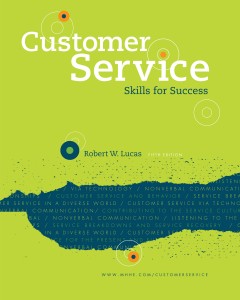Strengthening Customer Communication
Customers who feel that they have an active role and control of a service-provider interaction often feel more important and valued. Improved interpersonal communication can lead to higher levels of customer satisfaction and retention and reduced stress for you and your co-workers.
Take advantage of the following strategies to build stronger relationships with your internal and external customers.
Gather Information
Ask for customer input whenever possible. By knowing more about their needs, wants and expectations, you will be better able to provide services and products that satisfy them. Use strategies you will find in this chapter to gather valuable information from people who you encounter on a daily basis.
Be Consistent
People tend to like what is familiar. If customers come to know that they can depend on you and your organization to regularly provide timely, factual information, they will likely be more loyal. Provide information and updates to customers on a regular basis, not just when it is convenient for you. This is especially true when you are working on a problem or service breakdown. Remember that they do now know what you know. For example, if you are gathering information or need more time than expected, come back to the customer with periodic updates to give them a status check.
Demonstrate Openness
Customers often want to see that service providers understand them on a personal level. The worst thing you can do as a service provider is to hide behind a policy or deflect responsibility when dealing with a customer issue or question. Think of how you likely react when a service provider says something like, “I can’t do that because our policy says…” You probably feel the hairs rise on the back of your neck and become agitated. Your customers are no different. When interacting with them, take the time to put yourself in their place before saying something or taking an action that might create an adversarial situation.
Be Personable
Service providers who tend to be “all business” or robotic in their service delivery often fail to get high marks from customers. Even if you are knowledgeable, efficient and follow all the rules in delivering service, you could end up with a customer who is dissatisfied if you do not demonstrate some degree of humanness. This means connecting on a personal level and showing compassion and concern for your customers and their emotional needs.
By communicating effectively and regularly with your customers, you show that you are more than a customer service representative; you are a person. For example, if someone tells you during an interaction that they are celebrating a special event take the time to ask explore the topic briefly or relate a personal example. If it’s their child’s birthday, you might wish the child an enthusiastic “Happy Birthday” and ask him or her how old they are or what they hope to get for their birthday. Depending on the type of business you are in, you might even offer a small present (e.g. a free dessert, a piece of candy, a toy, coupon for a discount on their next visit, or whatever might be appropriate). At the least, upon concluding the transaction, wish them well or congratulate them one more time.



